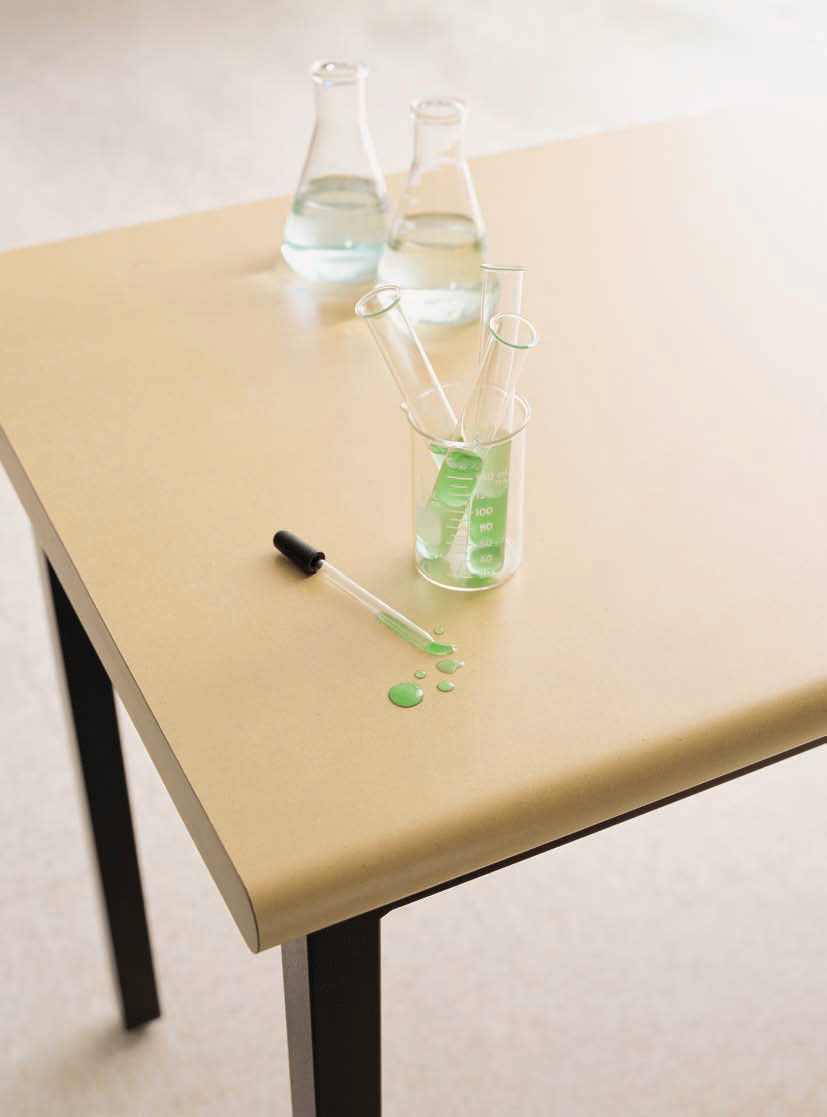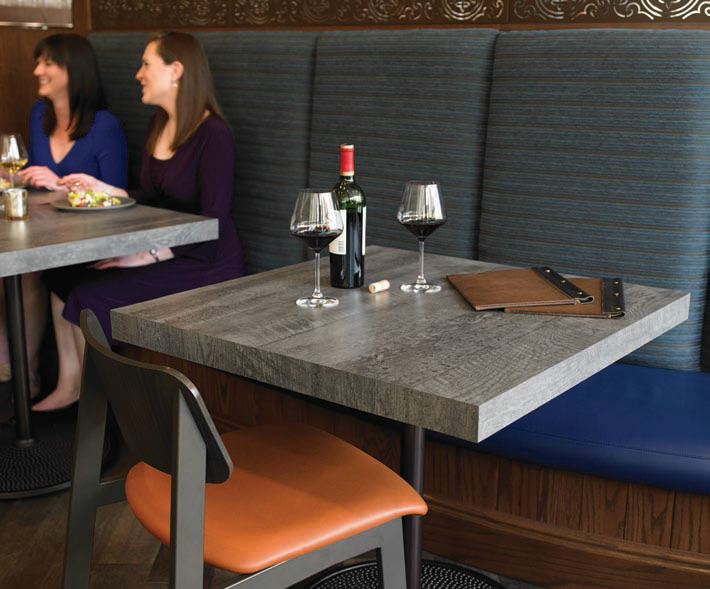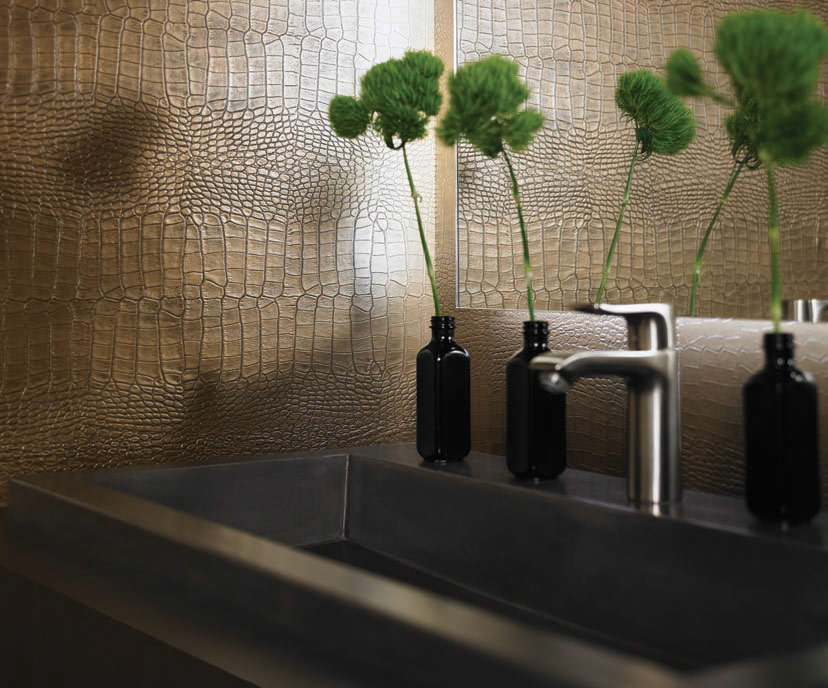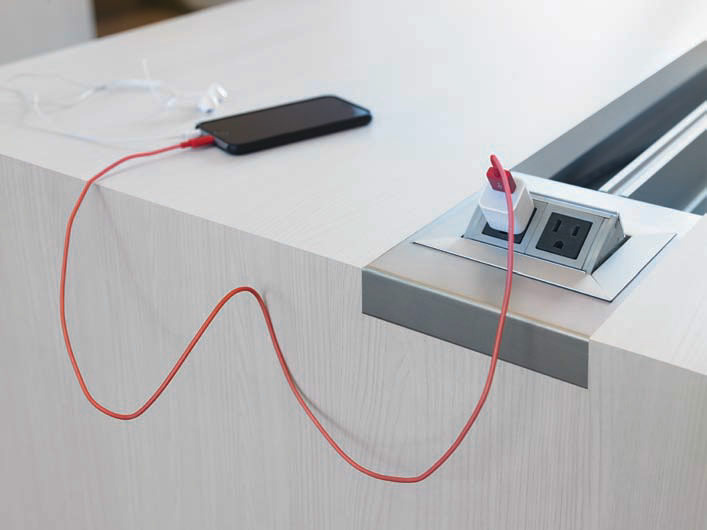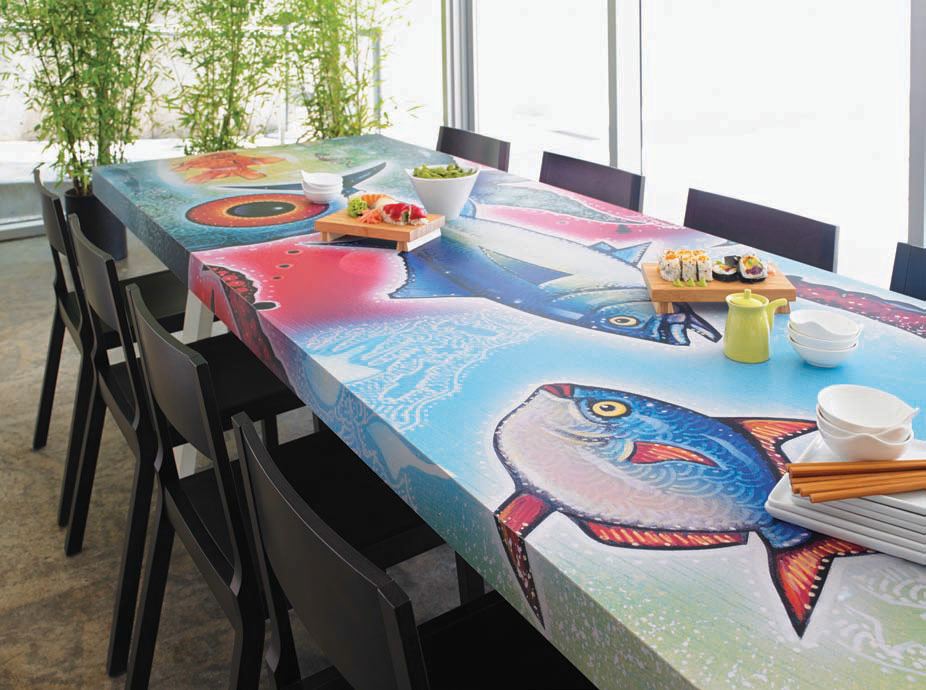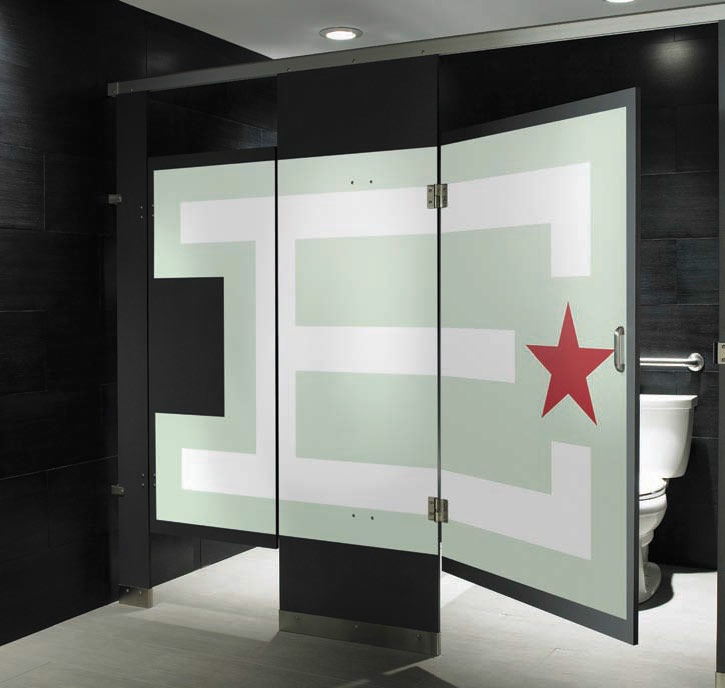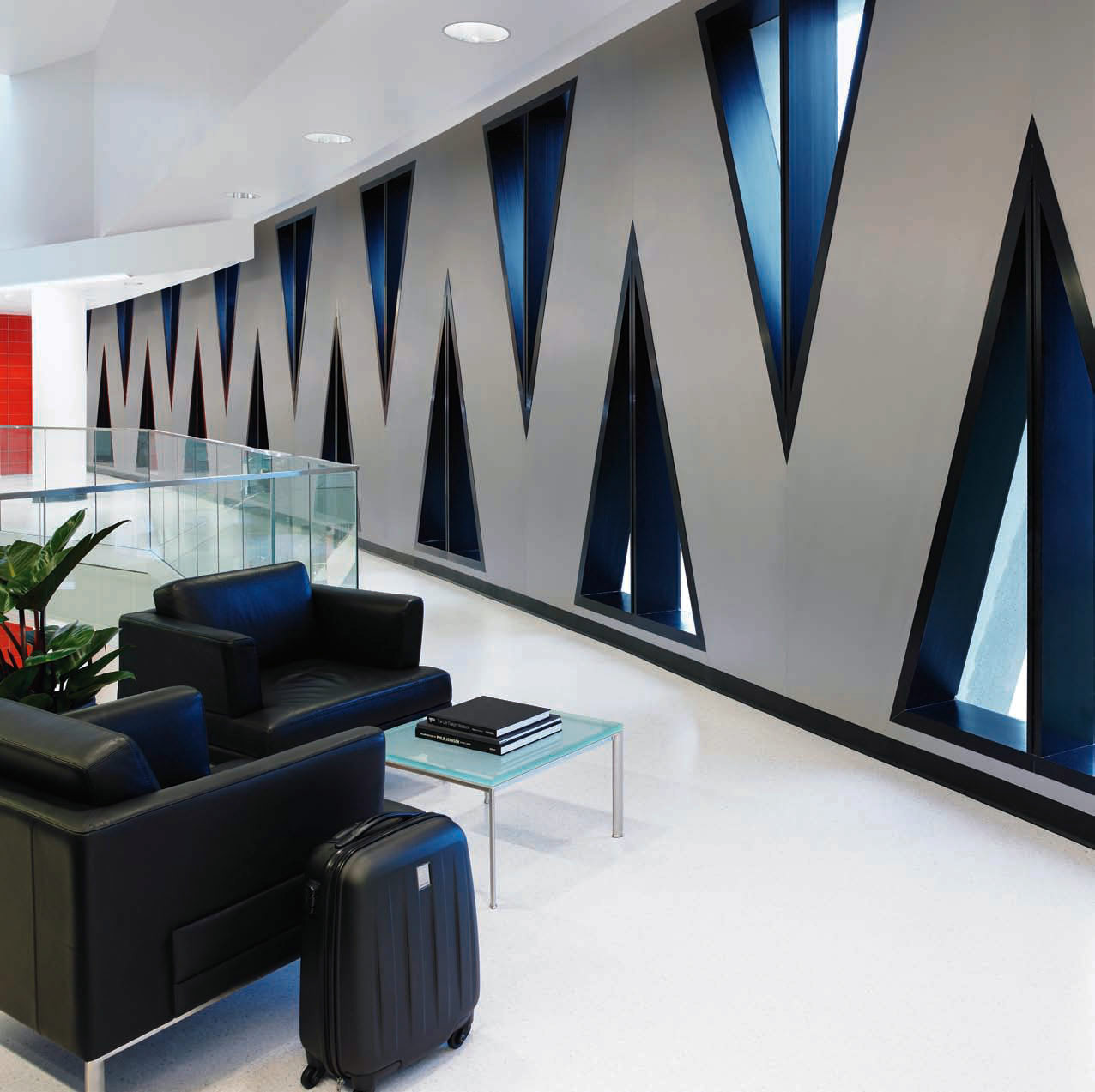The ideal choice for both architects and homeowners
13 October 2017The iconic Formica brand is over 100 years old. From selling Formica laminate as a substitute to replace mica in electrical insulations, the Formica Group is, today, a leading provider of branded, designed surfacing solutions for commercial and residential customers worldwide
Daniel J O’Conor and Herbert A Faber invented Formica laminate in 1912 while working at the Westinghouse Electric Corporation in the US, resulting in a patent grant on February 1, 1913. It was originally used to replace mica in electrical insulation, made of wrapped woven fabric coated with Bakelite thermosetting resin, then slit lengthwise, flattened, and cured in a press.
So the two would-be entrepreneurs left Westinghouse to start their own business based on the product, enlisting lawyer and banker John G Tom who provided US$7,500 capital as a silent business partner.
The company began operation on May 2, 1913 and was immediately successful: by September, the Formica Products Company employed 18 people trying to fill the demand for electrical parts for Bell Electric Motor, Ideal Electric, and Northwest Electric.
Because the new product acted as a substitute ‘for’ an insulation material ‘mica’, Herbert Faber coined the name ‘Formica’ as a trademark (the word already existed as the Latin name for wood ants, from which formic acid and the derivative formaldehyde compound used in the resin were first isolated).
In 1927, the Formica Insulation Company obtained a patent on an opaque barrier sheet that allowed the use of rotogravure printing to make wood-grained or marble surfaced laminate, the first of many innovations that were to associate the name Formica with decorative interior products. Later melamine thermosetting resin was developed by the American Cyanamid Company. It resisted heat, abrasion and moisture better than phenolic or urea resins and could be used to make more colours. Soon after, Formica was buying the entire output of melamine from American Cyanamid.
By 1930, the company began to make a shift from industrial applications with a new focus: decorative laminate products.
Colourful, durable and cigarette-proof, Formica Brand Laminate became a popular choice for the interiors of cafes and nightclubs, as well as railway cars and luxury ocean liners like the RMS Queen Mary. But as the US entered World War II, the Formica Company focused on military production until hostilities ended.
During the post-war boom, sales of Formica Brand Laminates reached US$24m and the company advertised vigorously to promote designs such as Brooks Stevens’ iconic Skylark pattern. Raymond Loewy Associates created the company’s ‘Sunrise’ line and Prince Sigaard Bernadotte of Sweden, the classic ‘VirrVarr’ pattern.
Formica Brand Laminates became a symbol of modern lifestyles and the company began to build a worldwide presence.
The Formica Corporation also continued to emphasise design, establishing the Design Advisory Board and organising ‘Surfacing and Ornament’, an exhibition of ColorCore laminate artwork that made its debut at the Art Institute of Chicago.
Mirroring the economic climate of the 1980s and 1990s, the Formica Corporation experienced multiple changes in leadership during this volatile period.
In 2007, New Zealand company Fletcher Building Ltd acquired the Formica Group Divisions of Asia, Europe and North America. Combined with the Laminex brand under the Fletcher umbrella, the Formica Corporation became the largest player in its industry worldwide. The company also achieved significant goals towards becoming a greener enterprise.
In 2013 the Formica brand celebrated 100 years.
Today the group is an industry leader in the design, manufacturing and distribution of surfacing materials, from high-pressure laminates, speciality laminates and solid surfacing to sinks, commercial casework and other related products all of which are aimed at both commercial clients and homeowners.
Working closely with architects, designers and developers, the company is strategically positioned to offer new products and surfacing solutions that complement current design trends.
“The Formica Speciality Collection allows architects and designers a greater range of premium surfacing options to enhance their designs with both style and function,” says Renee Hytry Derrington, group vice president of design for Fletcher Building’s International Business Division, which includes the Formica Corporation.
“This collection features innovative products that tap into today’s trends and enables professionals to achieve beautiful looks without sacrificing on material quality or the project budget,” adds Mr Derrington.
The Speciality Collection range was on display at NeoCon 2017 held in June in Chicago. This event is considered North America’s most important design exposition and conference for commercial interiors.
From the Speciality Collection range is Formica Infiniti with its solid colour throughout and elegant, contemporary matte finish making it ideal for use in high traffic areas. Its soft, luxurious touch, that is said to work harder than anything Formica has made before, is a perfect choice for stylish interiors.
Created with technology that protects it from marks, fingerprints and accidental abrasions it stays looking better for longer. Applications such as counters, reception desks and furniture can be enhanced with special inlay effects and sharp edging details.
The ColorCore2 in the Speciality Collection offers colour all the way through. With solid colours and versatile patterns there are no dark edges.
An eco-friendly product made from recycled leather, dECOLeather, also in the collection, brings sustainable luxury to interiors by reusing a precious resource and making it more affordable. With its deep colours and rich textures, dECOLeather recycled veneer is said to redefine interiors.
It is available in 18 colours and three richly grained finishes and channels the distinctive texture of crocodile, walrus and buffalo.
Wood and metal decors are also available in Formica Laminate. Wood for example is celebrated with its natural beauty including subtle timeless classics, local wood grains and exotic species with a nostalgic retro feel all combined with a variety of tactile surface finishes.
DecoMeta presumes real metal with an upscale look while Chemtop2 comes in a chemically resistant nonporous material.
Formica Collection True Scale offers eight marble decors that replicate the characteristics of the natural stones perfectly.
Another innovation is Formica Compact Grade Laminate which is a structural twosided laminate that provides endless creative possibilities for fixtures and furniture in commercial, institutional and hospitality settings that stand up to heat and humidity.
And you can also create your own look with Formica Envision. This allows customers to use their own designs, photography, logo, illustration or painting Axiom kitchens and worktops by Formica offer a stunning range of worktops, upstands and splashbacks featuring innovative designs, partnered with premium surface finishes, while Formica’s Washroom Collection offers colourful yet practical tactile surfaces for high humidity washroom environments.
The Formica Door Collection offers a practical solution for functional, high traffic applications. It is decorative, hygienic and impact resistant. The company’s Exterior Range includes VIVIX architectural solid phenolic, engineered exterior façade panels with a decorative surface on both sides offering weather and UV resistance
